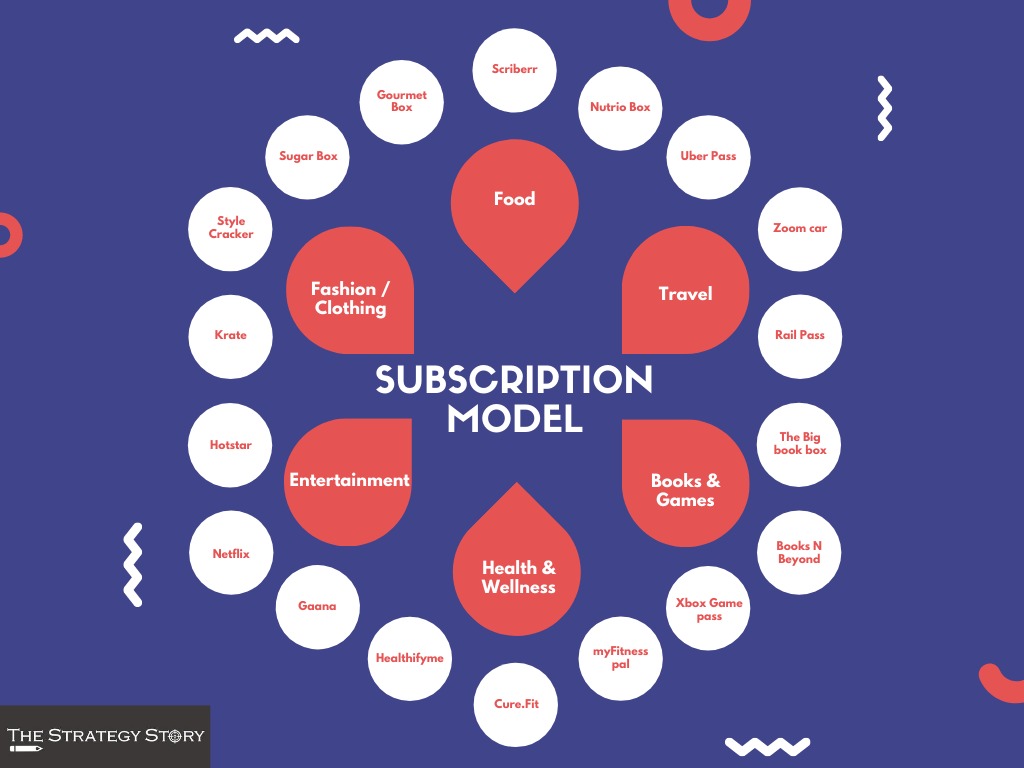My mornings start with some light exercises using Cure.fit. Then comes meal preparation using Hello Chef. In between work, I take breaks and read random stuff for 10-15 minutes almost twice a day in Medium or HBR. Once the day ends, I get my dinner watching something on Netflix or Apple TV. You may have noticed something, I am fully enmeshed in the “subscription world”.
The concept of a subscription is not new. Historically, it has been used for newspapers, magazines, or maybe a gym membership. But only in the last few years, it has taken the world by storm due to the emergence of digital technologies. Businesses have started to use this model with physical products and are enjoying enormous success.
So what exactly is a subscription model?
The subscription-based business model is a model that charges customers a recurring fee- monthly, quarterly or yearly — to access their product or service. Established with the primary focus of customer retention over customer acquisition, this model helps companies capitalize on the customer relationships that companies have developed. As long as customers see the value in what the company provides for them, they’ll continue to pay for it.
With the rise of technology and software as a service (SaaS) products, many companies are moving from a business revenue model where revenue is made from a customer’s one-time purchase to a subscription model where revenue is made on a recurring basis in return for consistent access to the delivery of a good or service
-Investopedia’s Evan Tarver

What are the different types of subscription model?
Access-based: Involves a periodical fee to get products or services based on requirements.
Curation-based: This model works for customers wanting to discover or sample products, curated or personalised items sold as boxes for various popular categories like beauty, fashion, food, books, etc.
Replenishment-based: This model aims to remove the hassle of frequent ordering by automating the delivery of consumables, like razors, milk, medicines etc.
Let us look at some of the areas where we use subscription as a service in our day-to-day life.

Why should companies choose the subscription model as a core business strategy?
- Customer loyalty- The best of marketing aims at meeting customer expectations. Nothing exemplifies this more than subscription services. Customers know how much and when they will be billed each month. This, coupled with consistency in providing tangible products or services, helps companies earn Loyalists which even paid acquisitions sometimes cannot ensure.
- Low, one-time acquisition cost with growing lifetime value- It costs up to 5X to get a new customer vs retaining your existing ones. With the subscription model, companies need to pay only once to secure the customer. What is required is only upfront marketing work to get them to opt-in. Then, the value of the product keeps them subscribed, producing repeated revenue for the brand.
- Recurring income = Simplified Financial Forecasting- We all know the most challenging thing to forecast in any business is sales. Seasonality, holiday seasons or pandemic, forecasting topline is so much like forecasting weather. Subscription service acts like the raincoat. Companies can rely on a steady cash flow which helps them meet the yearend objective. Additionally, companies can better optimize their inventory flow instead of incurring high storage costs.
- Free market research and product development- Where companies spend millions of dollars on studying the market trends and customer behavior, companies with a subscription model get such insights free of cost. It helps them what resonates better with different customer segments and which products they should invest in further.
Sephora’s PLAY! by Sephora is a complete market research game. The box introduces new products to the customer, which they may not have used yet. These customers, if they like the products, may then go out of their way to buy the product on their own, generating higher revenue for Sephora. In case the sample does not translate into future sales, Sephora can easily decide to remove it from the shelves.
- Convenient and “cheap” for customers- Subscription services leverage the psychology behind discounts. Price-savvy customers who can easily waive off brand loyalty out the window for a good discount, subscription services keep them around creating a bias that they are saving money. Additionally, it reduces the load of going out, window shopping, remembering a brand or even the hassle of thinking. Customers can sit back and enjoy the product or service.
In India, Subscription as a concept is often misconstrued as just a box or rental service. But the core of subscription business is Customer Centricity. Companies put customers in the centre and try to curate a personalized service for them which is enabled by technology. As the world moves towards a Service economy, big traditional companies who who have been showing resistance up until now are being forced to rethink their strategy. And in all this, Subscription model emerges as a true winner.
If you are not shifting to this business model now, chances are that in a few years you might not have any business left to shift
– Tien Tzuo, Founder and CEO of Zuora















